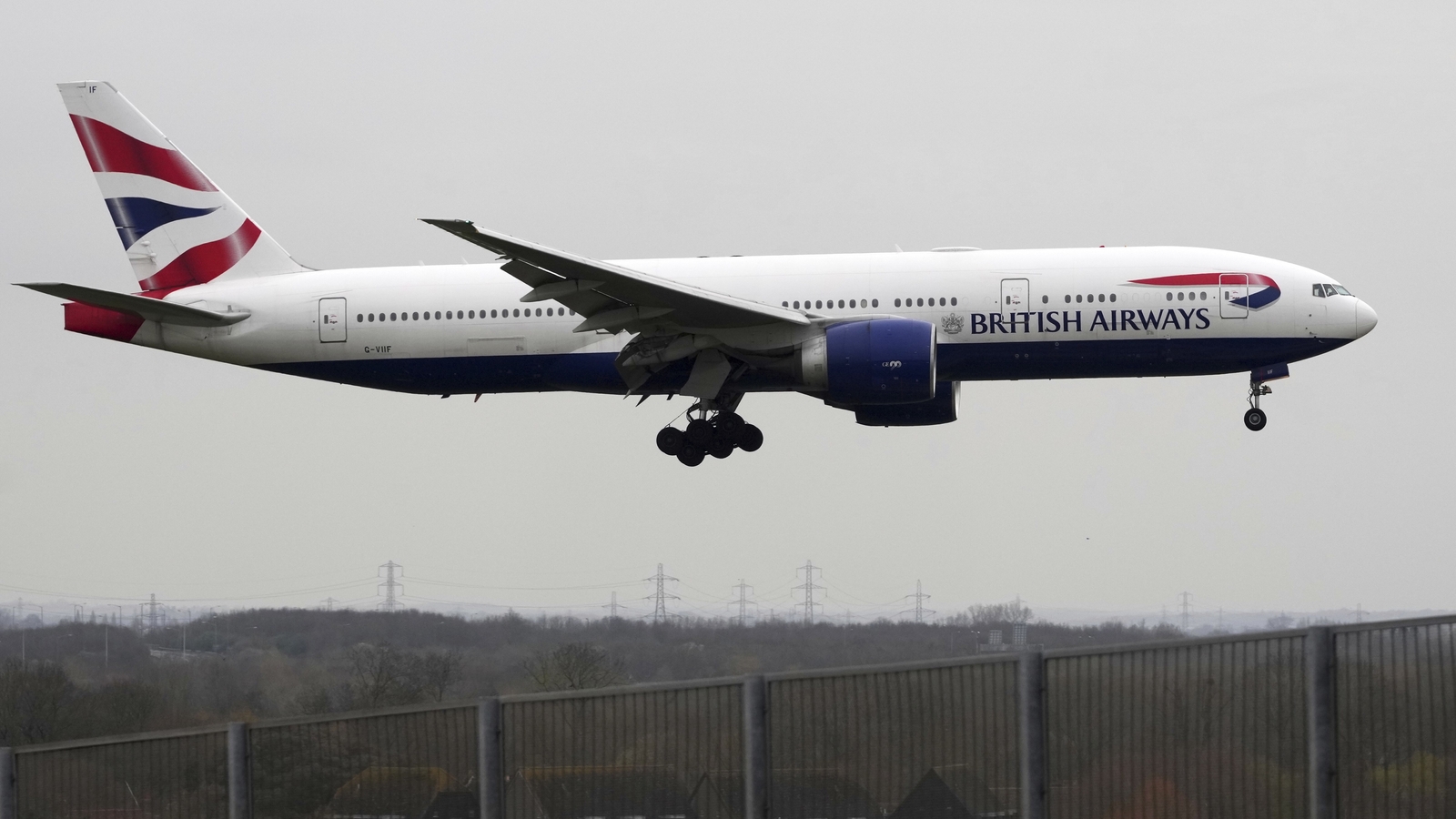Chennai-Bound British Airways Flight Turns Back to Heathrow Due to Technical Issues
Technical Glitch Forces British Airways Flight BA35 Back to Heathrow
On June 15, 2025, a British Airways flight from London to Chennai had to make an unexpected return to Heathrow Airport due to reported technical issues. The Boeing 787-8 Dreamliner, designated as flight BA35, took off amidst some delays but circled over the Strait of Dover before safely landing back at its departure airport.
Flight Details
- Flight Number: BA35
- Aircraft Model: Boeing 787-8 Dreamliner
- Departure: Heathrow Airport, London
- Scheduled Destination: Chennai, India
- Takeoff Time: 1:16 PM IST
- Delay: 36 minutes
British Airways, in an official statement, confirmed that the decision to return was a precautionary measure taken in response to the technical issue. The airline emphasized, "The flight landed safely with crew and customers disembarking as they normally would, and our teams are working hard to get their journeys back on track as soon as possible."
What Happened?
After takeoff, the aircraft began experiencing a technical hiccup, leading pilots to contact air traffic control and circle briefly over the Strait of Dover. This region is recognized for its busy air traffic patterns and proximity to London, making it an ideal location for aircraft to divert back to safety.
Passengers who were on board the flight were given all necessary assistance once they returned to Heathrow. The airline’s detailed procedures ensured that passengers were attended to effectively, allowing for smooth disembarkation despite the stressful circumstances.
An Increasing Trend in Flight Diversions
This incident is part of a broader trend within the aviation industry where airlines are increasingly prioritizing safety over schedules. Recent reports indicate that there have been multiple instances of flights returning mid-air due to technical issues. In conjunction with BA35’s early return, another flight operated by Lufthansa, bound for Hyderabad from Frankfurt, also made an emergency return shortly after takeoff, although the specifics of that situation are less clear.
How common are these technical returns? The answer isn’t straightforward, but the aviation community has seen:
- Average of 1 in 1,000 flights diverting due to technical issues.
- Growing emphasis on maintenance checks and equipment upgrades to mitigate potential emergencies.
Airlines are under increasing scrutiny to uphold safety protocols, which means that any sign of a snag will almost always lead to cautionary measures by the crew.
Understanding Aircraft Technical Glitches
Technical issues can arise for a multitude of reasons, from software malfunctions to mechanicalWear-and-tear. The Boeing 787 series, which is renowned for its advanced technology, has seen its fair share of hurdles over the years, particularly with the following common concerns:
- Flap Failure: Problems relating to the aircraft’s flaps can affect landing and takeoff capabilities.
- Wing and Engine Performance: Over time, wear can impact overall engine efficiency and response.
- Electrical Systems: Given the reliance on sophisticated electronic systems, any fault here can lead to serious complications.
Safety First: Airline Protocols and Passenger Confidence
Airline safety is paramount, and protocols are in place for a reason. Passengers often express anxiety during flight, and returning early can instill additional unease. However, it’s critical for passengers to understand that safety protocols are designed to protect them.
Before every flight, airlines carry out comprehensive checks on their aircraft. In these circumstances:
- Crew Training: Pilots and staff undergo rigorous training for such emergencies.
- Regular Maintenance Routines: Aircraft are regularly serviced and checked for anomalies.
- Emergency Protocols: Comprehensive guides and practice drills ensure that in-flight staff are prepared for any incidents.
Conclusion
The unexpected returns of flights like British Airways’ BA35 and others serve as reminders of the aviation industry’s commitment to passenger safety. While it may result in inconvenience, these actions prioritize the well-being of customers and crew alike. Passengers are recommended to stay informed and keep an open mind during travel as airlines increasingly focus on safeguarding public safety.
In the end, while a technical glitch may cause a moment of concern, the robust measures in place ensure that safety remains the utmost priority in air travel. As we continue to fly across borders, it’s essential to appreciate the advancement in aviation technology that allows for quicker recognition and response to potential challenges in the sky.





